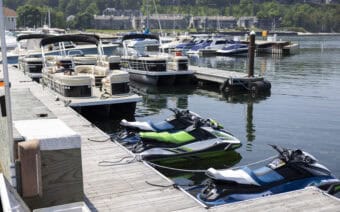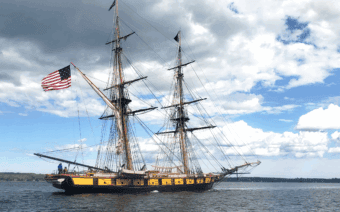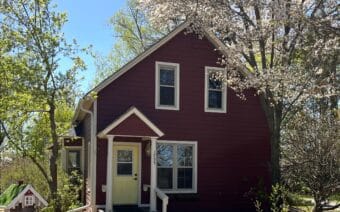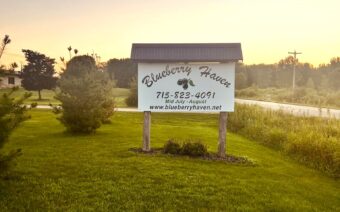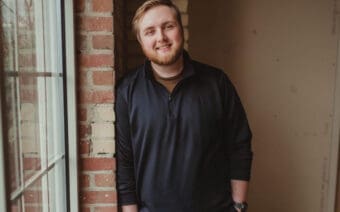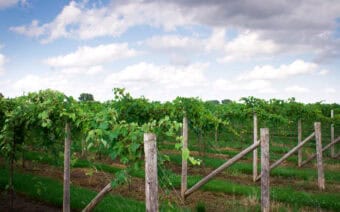
March 10, 2023
FOX CITIES – Record-breaking – that, according to the Fox Cities Convention & Visitors Bureau’s (CVB) latest annual report, is what 2022 was for tourism in the Greater Fox Cities.
“We had an incredible 2022,” Executive Director Pam Seidl said.
Each year, the Fox Cities CVB – which includes 19 communities in Northeast Wisconsin – creates an annual report, which Seidl said showcases the previous years’ successes.
“It’s our way of communicating to our stakeholders, and frankly to the greater community about the impact of tourism in the Fox Cities,” she said. “We are an independent 501(c)(6) organization, but we do receive room tax funds for our operating (budget). So, I think it’s important we show transparency not only in what we do and what’s going on in the tourism industry, but also thank the industry and the community for their support.”
After taking a hard hit thanks to the COVID-19 pandemic, Seidl said tourism in the Fox Cities has returned to pre-pandemic levels, ahead of the forecasted reports.
“Everyone was supportive and listened during the pandemic when tourism was affected so negatively,” she said. “So, it was a pleasure to share some great news about how things have turned around so dramatically and recovered. Our local economy, from a tourism standpoint, is doing well.”

Pam Seidl
Released last month at the CVB’s annual tourism breakfast, the annual report shows visitation in each of the area’s three market segments – leisure travel, sports and meetings and conventions – showing positive momentum in 2022.
According to the report, nearly every month in 2022 delivered the highest room revenues on record, exceeding the area’s record-setting 2019.
Destination Master Plan
The CVB also recently released its Destination Master Plan – which Seidl said represents a doubling down on the tourism economy.
“The Destination Master Plan is something I had been hoping to do and studying for the last five years,” she said.
Seidl said the year-long creation process – in partnership with MMGY NextFactor (a consulting firm specializing in travel and tourism) – included a task force, stakeholders engagement, interviews and focus groups.
Additionally, she said MMGY NextFactor conducted a DestinationNEXT stakeholder assessment study which resulted in 111 completions, and a resident survey, which resulted in 577 completions.
Seidl said the future success of the Fox Cities visitor economy depends on the public, private and civic sectors co-creating their shared vision for the future of the region that supports a balance of visitor growth, resident quality of life and overall quality of experience for all who spend time in the Fox Cities.
“We spent a lot of time talking with our residents,” she said. “In fact, one of the biggest inputs was a resident survey, which might seem a little counterintuitive (for) a tourism organization. But a great place to live is also a great place to visit, and your residents know your product.”
According to the resident survey, roughly 85% of residents agree tourism is good for the Fox Cities and 68% agree the Fox Cities are places people want to visit.
Additionally, 42% of respondents felt there are currently too few visitors to the destination, and only 2% felt there are too many.
“By getting their input and understanding what works and what needs to maybe be invested in will also pay dividends in tourism, and of course, in quality of life,” she said. “We have this long-term vision of being a vibrant year-round destination, with a mix of experiences, fueled by original thinking. It calls on everything because I think that’s attractive to a visitor, a resident and a potential recruit – and so much more. So, now we’re seeing this intersection of all of these things.”
Seidl said that is why it is called a Destination Master Plan and not a Tourism Master Plan.
“It’s about the destination, no matter how you come to it – whether you come through as a visitor, if you come here as a resident or if you come to it as someone who’s trying to build a business here,” she said.
Seidl said the compiled data, along with key findings and recommendations, were presented to the Task Force in a series of three on-site working sessions throughout the project.
From there, she said five strategic goals were created to provide a framework for decision-making and investment efforts.
They include:
Strengthen the brand through iconic festivals
Increasingly, Seidl said reputation, quality of place and the perceived brand of a city are determining where talent, capital and tourism flow.
She said activating the place brand strategy in a constant and coordinated manner is key to building a reputation that gives added value to an area.
In the Fox Cities, she said, this includes developing new festival experiences, creating an iconic winter festival/carnival, identifying gap periods for longer-term festivals or grouping of events and considering expanding Mile of Music to other municipalities.

Pam Seidl said each community’s unique identity, like Little Chute’s Dutch heritage, adds to the visitor experience. Photo Courtesy of Fox Cities Convention & Visitors Bureau
Develop communities as experiences
Seidl said this goal looks at experiences by addressing infrastructure gaps for hosting larger events, creating connections, supporting free Wi-Fi in all communities and developing a regional “deal” program to encourage visitors and locals to explore and create opportunities.
“Instead of thinking about it as going from Appleton to Little Chute – think of them more as neighborhoods,” she said.
Seidl said this means looking at the Fox Cities in a similar fashion as New York.
“You’ve got Manhattan, you’ve got the Bronx, you’ve got Queens – they are a separate municipality, but in the marketing mind of all of us, we think of it as New York City,” she said. “Allowing each municipality to keep their own identity… their different vibe and feel, but it all adds to the visitor experience when they’re here.”
Expand strategic regional collaboration
Seidl said tourism helps shape the perception and reputation of the Fox Cities, which is critical to the region’s economy.
Expanding regional collaboration, she said, is key to success in that endeavor.
“We’ve got a good collaborative mentality here in the Fox Cities from supporting tourism and doing a regional tourism approach,” she said. “But how do we, as a CVB, work together with some businesses and industries to attract industry-specific or sector-specific conventions to the area?”
Seidl said leveraging community assets will help the Fox Cities build more tourism.
“Work with businesses and local education institutions for key subject matter experts,” she said. “So, when we bring in a convention on genetics, there’s a professor at Lawrence University who’s an expert at genetics and maybe that person could do a keynote.”
Enhance outdoor recreation opportunities
Seidl said in the post-pandemic era, there is an even greater demand for outdoor experiences, and the Fox Cities are well-positioned to capitalize on this trend.
This, she said, includes capitalizing on the area’s waterways.

Executive Director Pam Seidl said embracing Wisconsin winters and the activities it offers can help make the Fox Cities a year-round destination. Photo Courtesy of Fox Cities Convention & Visitors Bureau
“How do we capitalize on all the water – the beautiful river and Lake Winnebago?” she said.
Seidl said it also includes embracing and amplifying winter.
“There’s an opportunity to be a year-round destination,” she said. “Let’s face it, we have five to seven months of winter sometimes. We have to embrace that. We have to figure out how to make sure we can present this area in a year-round fashion as a place to come no matter what the season or what the weather is.”
Improve access and connectivity
Seidl said as the Fox Cities visitor economy grows, how visitors come to and move around the destination needs to evolve to meet the needs of travelers.
“That’s everything from more flights in and out of the airport to expanding public transportation,” she said. “As well as working on the whole effort around Amtrak rail service coming to the Fox Cities to getting Valley Transit to go all the way to the airport, which it doesn’t right now.”
Next steps
Seidl said the five goals are meant to guide CVB’s overarching vision of enhancing the Fox Cities as a destination.
Implementation, she said, is definitely going to be the most important part.
“Certainly, we didn’t go about this effort to have it sit on the shelf,” she said. “From the CVB standpoint, in my mindset, the next step is taking some of these recommendations, prioritizing them and working with our local stakeholder groups on what’s already started – we’re not interested in duplicating an effort.”
The effort behind bringing Amtrak to the area, Seidl said, is one of them.
“We’re aware there are initiatives underway led by other groups,” she said. “So, how do we join that group?”
Seidl said it’s about identifying where the CVB needs to lead an effort and where it needs to be an advocate with others.
“So, our next step is going through the information-gathering phase,” she said. “What are the key efforts, what’s already happening, where we can maybe help enhance it? Or, what are some efforts we need to start looking at and start convening groups of people to move the plan forward?”
Economic development
At its core, Seidl said the Destination Master Plan is an economic development plan.
“I think that is why we had so much support and buy-in from a lot of local groups,” she said. “We had people from the chamber, many economic development staff from our municipalities and representatives from our downtown organizations all at the table.”
The plan, Seidl said, was a way for the CVB to look at the tourism product.
“We do a lot of sales and marketing, but this was a product development plan – looking at where we need to go to continue to impact the tourism products here and the experiences people have,” she said. “We also liked that this plan is an economic development plan.”
Seidl said it is done through a tourism lens, but it’s not all tourism.
“There are many things in here that will impact the workforce, workforce attraction and retention and quality of life for our residents,” she said. “It’s a little more holistic plan, which I appreciate.”
Seidl said the CVB will report on the plan’s progress annually.
“Our MMGY NextFactor consultant said this is a marathon, not a sprint,” she said. “There will be some things that are definitely low-hanging fruit that we will be able to get moving right away. And then there are definitely going to be some longer-term things that will take multiple years to do so.”
 Powering forward with solar energy
Powering forward with solar energy Bringing the convenience of the city to the middle of nowhere
Bringing the convenience of the city to the middle of nowhere


